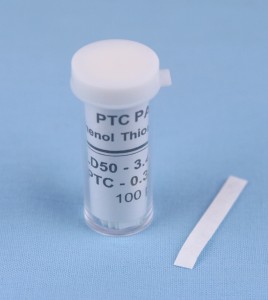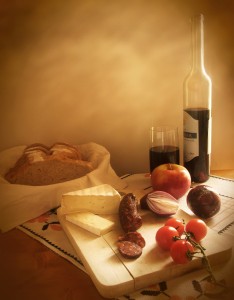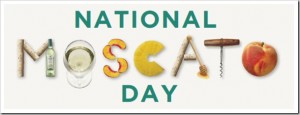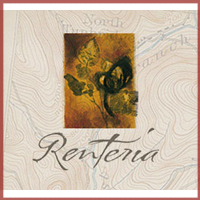by Lorri | Jun 5, 2013 | UnCorked
The difference in rose, blush and white zinfandel is a common question from Uncorked readers. The term “rose” has been used for centuries for the French rose, along with Italy’s rosato and Spain’s rosado wines. White zinfandel and the term “blush” are 20th-century American creations. They are all essentially the same, with only very minor variations.
Most wine grapes have clear juice regardless of the skin color. Each style is made by removing the skins from the juice after the grapes are pressed. The winemaker watches for the shade of pink he wants, then quickly drains the juice from the skins. This stops the transfer of tannin and pigment from the skin. After this the wine is made like most white wines – with cool fermentation, no oak – and traditionally ends up dry or off-dry.
White zinfandel started as a wine making mishap but turned into an American phenomenon. In 1972 Bob Trinchero of California’s Sutter Home Winery salvaged a stuck fermentation (the yeast died before all the sugar could turn to alcohol) of his red zinfandel. He bottled a sweet, pale rose-colored wine he labeled “white zinfandel.” In the late ’80s Sutter Home was selling about 20,000 cases a year of that mistake and today that number is well into the millions. White zinfandel is generally pale pink, sweet and often given a touch of gas and blended with more obviously aromatic grapes such as Muscat or Riesling.
Blush wine has been heralded a “marketing triumph.” In the 1970s the term “blush” wine was born. Wine writer Jerry Mead was visiting the California Sonoma County winery Mill Creek Vineyards. He was offered a sample of a pale, pinkish wine made from cabernet sauvignon grapes. Lots of names were being thrown around but Mead suggested “blush.” The term stuck and the rest of the story is anardor relationship with the American wine drinker. Blush wines are made with a wide variety of red grapes and are generally lighter in color than traditional rose and most likely sweet. They may be labeled vin gris, cabernet blanc, blanc de pinot noir or white zinfandel, depending on the grape.
THE VALUES
- 2010 La Vieille Ferme Rose, France (about $12 retail)
- 2012 La Remise de la Mordoree Rose, France (about $16 retail)
THE SPLURGES
- 2011 Blackbird Vineyards Arriviste Rose, California (about $28 retail)
- 2011 Turkey Flat Rose, Australia (about $22 retail)
by Lorri | May 29, 2013 | UnCorked
The Art of Wine is one of my favorite wine events in Arkansas, and this year it’s celebrating 13 years of success. This Northwest Arkansas gathering draws guests from across the country, with proceeds supporting the Walton Arts Center’s award-winning arts and education programs. What started as a simple affair has grown into one of the largest in the region, featuring hundreds of wines, food from dozens of restaurants and entertainment.
I enjoy all of the events and tastings, but my favorite is the annual Winemaker’s Dinner and silent auction June 13. It always has a touch of exclusiveness, as the dinner is held on stage in Baum Walker Hall at the arts center. This year, Arkansas is honored to have William Hill winemaker Alex Dutzi in attendance. Chef William Lyle of Ella’s Restaurant will prepare the intimate five-course dinner and, as expected, the wines will be sensational. To finish off the dining experience, Ghirardelli’s Chocolatier Steve Genzoli will create a special dessert. Tickets, $200 each, go quickly, so my advice is reserve sooner rather than later.
The warm-up tasting is at 7 p.m. June 14 at the arts center and presents more than 400 wines and nibbles from local restaurants. Tickets are $80 each.
The main event is The Premier Tasting at 6 p.m. June 15 at Baum Walker Hall. There will be heavy hors d’oeuvres prepared by Northwest Arkansas chefs and more silent auction items, ranging from art to entertainment. This grand highlight is a colossal tasting opportunity, with hundreds of wines to sample- many unique to this event. Tickets are $150 each.
For more information call the Walton Arts Center box office at (479) 443-5600 or visit waltonartscenter.org.
These are a few to keep your eye out for. I hope to see you there!
THE VALUES
- 2011 Tuck Beckstoffer Hogwash Rose, California (about $16 retail)
- 2011 Sean Minor Four Bears Chardonnay, California (about $14 retail)
- 2011 Charles Smith Eve Chardonnay, California (about $15 retail)
THE SPLURGES
- 2010 Charles Krug Napa Valley Generations, California (about $50 retail)
- 2010 Regis Bouvier Marsannay Clos du Roy, France (about $40 retail)
- 2011 Blackbird Vineyards Arise, California (about $55 retail)
by Lorri | May 22, 2013 | UnCorked
 In the past, wine, not food, was considered the culprit when it came to unsuccessful food and wine pairings. But realistically, almost every wine produced today will work with food. Of course there will still be the occasional horrible combination, not unlike having your morning orange juice after brushing your teeth.
In the past, wine, not food, was considered the culprit when it came to unsuccessful food and wine pairings. But realistically, almost every wine produced today will work with food. Of course there will still be the occasional horrible combination, not unlike having your morning orange juice after brushing your teeth.
The impact of food on wine is almost entirely determined by the balance of primary tastes in the food: sweet, salt, sour, savory or bitter. Certain foods will change when matched with certain wines.
But what if these tastes were perceived dramatically differently by each of us? Recently I watched a group of tasters comparing their tolerance for bitterness. Each was given a PTC Strip (phenylthiocarbamide) and asked to place it on their tongue. (The strips can be bought at most online school science project vendors.) It was startling to see how quickly some wanted to remove the strip. Others in the room kept it in for minutes, unable to detect bitterness at all. The everyday example could be how some people drink only espresso or dark black coffee while others add cream or sugar.
Because we all vary in our sensitivities and preferences there is no simple answer to what wine goes best with what food, but some dishes are higher risk than others. What this simple exercise shows us is we all have different tastes and react differently when wine and food are paired. But that doesn’t mean every new pairing is a crap shoot. The key to successful pairing experiments is knowing which foods are more likely to react to wine and understanding which pairings are high risk and which are low.
One of the highest risk factors is a food’s sweetness. Sweet foods can increase bitterness, acidity, astringency and even create a burning sensation when paired with wine. The reaction can also decrease the wine’s body, richness and sweetness. Sweetness is the No. 1 culprit for creating unpleasant interactions. It is because of this that we have the standing suggestion that the wine should always be sweeter than the food.
On the other end of the risk spectrum is salt. Salt is one of the most wine-friendly components of food, and can help soften some of the harsher elements in wine. Salt will increase the perception of body in the wine and decrease the perception of bitterness and acidity.
This week I encourage you to experiment with sweet and salt while pairing your wines.
THE VALUE
- 2011 Pacific Rim Columbia Valley Riesling, Washington (about $14 retail)
THE SPLURGE
- NV Sandeman Porto Tawny 10 Years Old, Portugal (about $40 retail)
by Lorri | May 15, 2013 | UnCorked
 One of my favorite wine and food pairing quotations is from a book titled London at Table: Or How, When, and Where to Dine and Order a Dinner, and Where to Avoid Dining, published in 1851 at the peak of the Industrial Revolution. This was a time when the word “Victorian” was being used as a self-expression with a new generation of wealthy businessmen and wives looking for status. An ideal strategy to get higher on this ladder was to host lavish, entertaining events at home or regal restaurants. Many families began hiring servants to assist in food preparation and service. And traditional buffet-style dining shifted to stately seated dinners with multiple-course processions. This opulent style of table dining allowed for, and arguably called for, each food course to be served with a different wine.
One of my favorite wine and food pairing quotations is from a book titled London at Table: Or How, When, and Where to Dine and Order a Dinner, and Where to Avoid Dining, published in 1851 at the peak of the Industrial Revolution. This was a time when the word “Victorian” was being used as a self-expression with a new generation of wealthy businessmen and wives looking for status. An ideal strategy to get higher on this ladder was to host lavish, entertaining events at home or regal restaurants. Many families began hiring servants to assist in food preparation and service. And traditional buffet-style dining shifted to stately seated dinners with multiple-course processions. This opulent style of table dining allowed for, and arguably called for, each food course to be served with a different wine.
With this new style of entertaining came the need for the creation of wine and food rules, or etiquette. Writers laid out these rules and some of the creators were even considered the “experts.” As you can imagine most of these rules were not presented as suggestions but stern instructions on what to do, and most without explanation. These etiquette-eager newcomers took to the direction without misstep.
London at Table was one of these rule books.
My favorite quotation, making me smile each time I read it: “In order to give the cook fair play, the fish should never be served with the soup, it’s a distinct and important course.”
The author goes on to point out vulgarisms to be avoided, “With white fish, one glass only of Hock or a Moselle Cup (a punch, mixing Riesling and sherry) With salmon either claret or port.”
“Champagne may be served throughout to the females at the table, as it’s a favorite with the ladies, a prevailing weakness of the day,” but even so never with the roast.
Of course, today we know the rules have become more relaxed but many still stand in the way of great food and wine combinations. Over the next few weeks of columns we’re going to explore some changes in food and wine pairing rules, starting with some fun homework to better understand why the rules are not always so simple.
The homework: Send me your best nontraditional pairings and your thoughts on these.
Grilled Salmon and Pinot Noir
THE VALUE
- 2011 Stemmari Pinot Noir, Italy (about $9 retail)
THE SPLURGE
- 2010 Renteria Russian River Pinot Noir, California (about $40 retail)
Chinese Egg Rolls and Pinot Gris
THE VALUE
- 2011 Adelsheim Pinot Gris, Oregon (about $14 retail)
THE SPLURGE
- 2011 Trimbach Pinot Gris, France (about $27 retail)
Popcorn and Champagne / Sparkling Wine
THE VALUE
- NV Piper Sonoma Brut Sparkling, California (about $15 retail)
THE SPLURGE
- NV Roederer Estate L’Ermitage, California (about $45 retail)
by Lorri | May 8, 2013 | UnCorked
 Add to your calendar another day to celebrate – this one for the love of a grape. Moscato has hit a stride with consumers and continues to be the fastest-growing grape varietal in the United States. It’s so popular that Thursday is National Moscato Day.
Add to your calendar another day to celebrate – this one for the love of a grape. Moscato has hit a stride with consumers and continues to be the fastest-growing grape varietal in the United States. It’s so popular that Thursday is National Moscato Day.
The style just seems to work for many American palates with its light, bubbly sweet tastes. It’s known for its surprising perfume-like fragrance. Even as a low-alcohol, straightforward wine the aromatics in most moscato have layers of tropical fruits, peach, orange blossom and even honeysuckle. It not only tastes refreshing, the easy-going wine pairs easily with many cheeses and spicy foods.
Most of us don’t need a reason to have a chilled glass of Moscato but lots of fun is to be had Thursday, starting with Gallo Family Vineyards, who will be hosting a National Moscato Day Twitter party from 8 to 9 p.m. It is offering an open invitation for anyone looking to learn more about the wine and different ways to enjoy it. By joining the conversation using the hashtag #MoscatoDay on Twitter, people can share and gather hosting tips, food-pairing suggestions and wine facts. Gallo is bringing in a few food and wine experts to join in the discussion, making the party even better.
Sutter Home Family Vineyards are also joining in the fun with a Moscato Day Sweepstakes from today to May 31. Fans are invited to enter for a chance to win one of 100 Moscato Prize Packs that contain a set of six charms, four plastic wine glasses, a sparkling wine stopper and a moscato cocktail recipe booklet. Sutter Home will also be hosting a Twitter Party, join in @SutterHome for #sutter-HomeMoscato from 7 to 8 p.m. Thursday. Eight people will be randomly entered to win a prize during the live Twitter party sweepstakes. Visit nationalmoscatoday.com for more information.
THE VALUES
- 2011 Gallo Family Vineyards Moscato, California (about $6 retail)
- 2011 Sutter Home Family Vineyards Moscato, California (about $6 retail)
- 2001 Mionetto Vineyards, Italy (about $14 retail)
- 2011 Woodbridge by Robert Mondavi Moscato, California (about $8 retail)
- 2011 Ecco Domani Moscato, Italy (about $15 retail)THE SPLURGES
- 2011 St. Supery Moscato, California (about $22 retail)
- 2011 Marco Negri Moscato d’Asti, Italy (about $22 retail)
by Lorri | May 1, 2013 | UnCorked
 Oscar Renteria, of Renteria Wines, and I had an immediate connection but, oddly, not on the subject of spectacular wine but our shared stories of farming.
Oscar Renteria, of Renteria Wines, and I had an immediate connection but, oddly, not on the subject of spectacular wine but our shared stories of farming.
I don’t think of the term “farming” as one usually showing up on the back labels of cult wines, but it means a lot to those who understand not only the wine but what the vineyard and land give to it. And it is in this understanding that our family stories – grapes growing in the soils of Napa Valley and cotton and soybeans in south Arkansas – come together.
Oscar’s father, Salvador Renteria, is the founder of their family’s legacy to the American wine industry. Salvador arrived in Napa Valley from Mexico in 1962, first picking grapes as afield laborer and later working as vineyard supervisor. In just a few short years his talents and knowledge of the terroir were evident as he went on to oversee some of the most recognized vineyards in the world, Silverado, Cuvaison, Clos Pegase and Beaulieu vineyards, to name a few. He was one of the first in Napa Valley to employ trellising and canopy management. His experiment sin the field led to innovative methods and improvements. In 1987 Salvador started his own management company.
Oscar took over the family business in 1993. He had worked in the vineyard alongside his father, gaining an understanding of his father’s passion and approach. The experience guided him in the direction he charted for Renteria Vineyard Management, Inc., the third largest vineyard management company in the northern Bay Area.
At our tasting Oscar clearly enjoyed talking about his family’s wines, but it was when he talked about Renteria’s future that the excitement in his voice peaked. He is convinced that new ways of using technology are key. Oscar believes combining his father’s ideas with modern innovations will lead to the best quality grapes a vineyard can produce.
Those of us in the wine industry call this terroir, many field workers call it the land and then some of us simply refer to it as the indisputable love of the land, soil, and nature: farming.
- 2009 Renteria Napa Valley Cabernet Sauvignon, California (about $30 retail)
- 2008 Renteria Russian River Pinot Noir, California (about $40 retail)
 In the past, wine, not food, was considered the culprit when it came to unsuccessful food and wine pairings. But realistically, almost every wine produced today will work with food. Of course there will still be the occasional horrible combination, not unlike having your morning orange juice after brushing your teeth.
In the past, wine, not food, was considered the culprit when it came to unsuccessful food and wine pairings. But realistically, almost every wine produced today will work with food. Of course there will still be the occasional horrible combination, not unlike having your morning orange juice after brushing your teeth. One of my favorite wine and food pairing quotations is from a book titled London at Table: Or How, When, and Where to Dine and Order a Dinner, and Where to Avoid Dining, published in 1851 at the peak of the Industrial Revolution. This was a time when the word “Victorian” was being used as a self-expression with a new generation of wealthy businessmen and wives looking for status. An ideal strategy to get higher on this ladder was to host lavish, entertaining events at home or regal restaurants. Many families began hiring servants to assist in food preparation and service. And traditional buffet-style dining shifted to stately seated dinners with multiple-course processions. This opulent style of table dining allowed for, and arguably called for, each food course to be served with a different wine.
One of my favorite wine and food pairing quotations is from a book titled London at Table: Or How, When, and Where to Dine and Order a Dinner, and Where to Avoid Dining, published in 1851 at the peak of the Industrial Revolution. This was a time when the word “Victorian” was being used as a self-expression with a new generation of wealthy businessmen and wives looking for status. An ideal strategy to get higher on this ladder was to host lavish, entertaining events at home or regal restaurants. Many families began hiring servants to assist in food preparation and service. And traditional buffet-style dining shifted to stately seated dinners with multiple-course processions. This opulent style of table dining allowed for, and arguably called for, each food course to be served with a different wine. Add to your calendar another day to celebrate – this one for the love of a grape. Moscato has hit a stride with consumers and continues to be the fastest-growing grape varietal in the United States. It’s so popular that Thursday is National Moscato Day.
Add to your calendar another day to celebrate – this one for the love of a grape. Moscato has hit a stride with consumers and continues to be the fastest-growing grape varietal in the United States. It’s so popular that Thursday is National Moscato Day. Oscar Renteria, of Renteria Wines, and I had an immediate connection but, oddly, not on the subject of spectacular wine but our shared stories of farming.
Oscar Renteria, of Renteria Wines, and I had an immediate connection but, oddly, not on the subject of spectacular wine but our shared stories of farming.